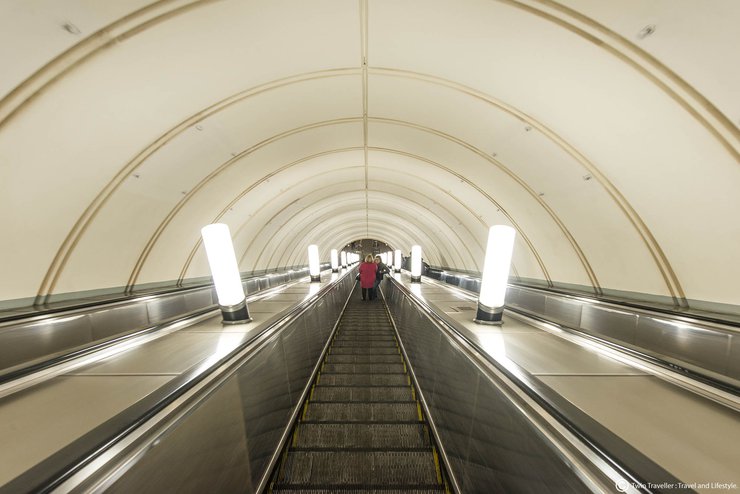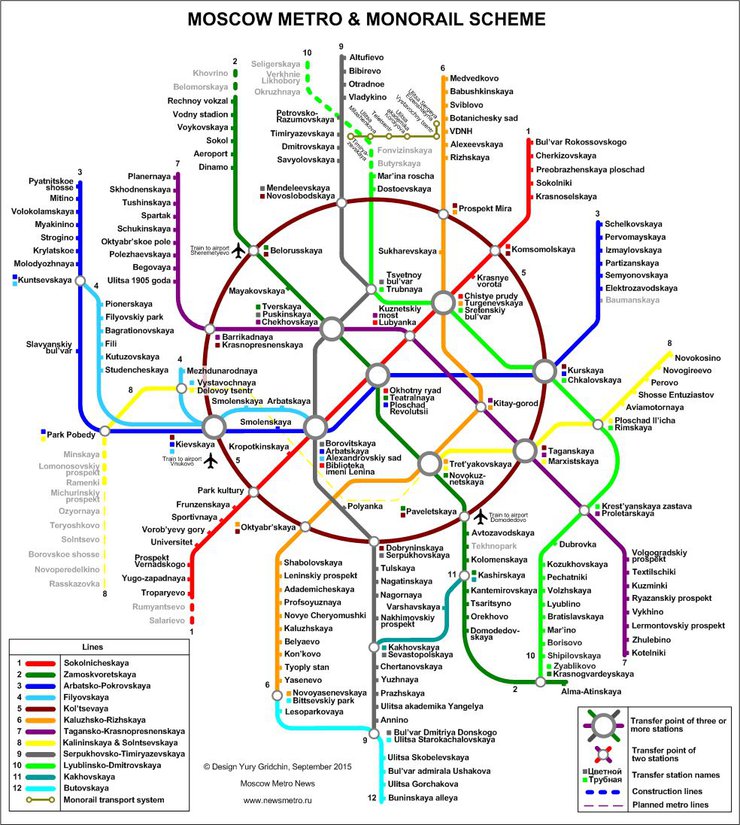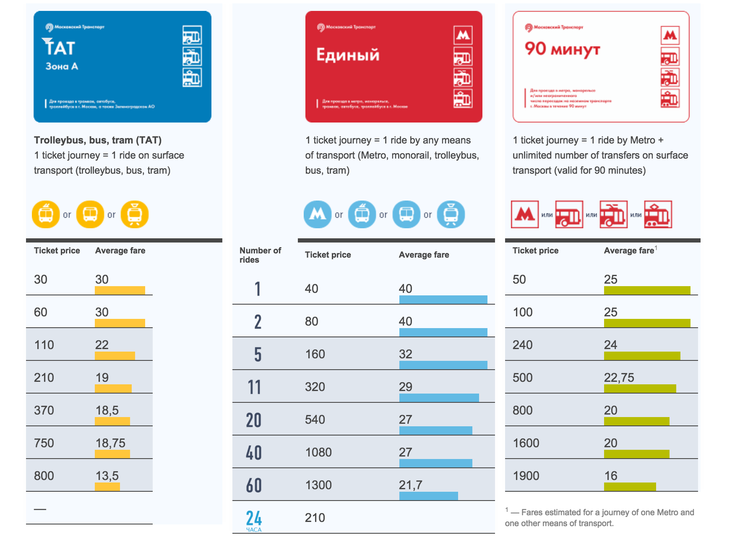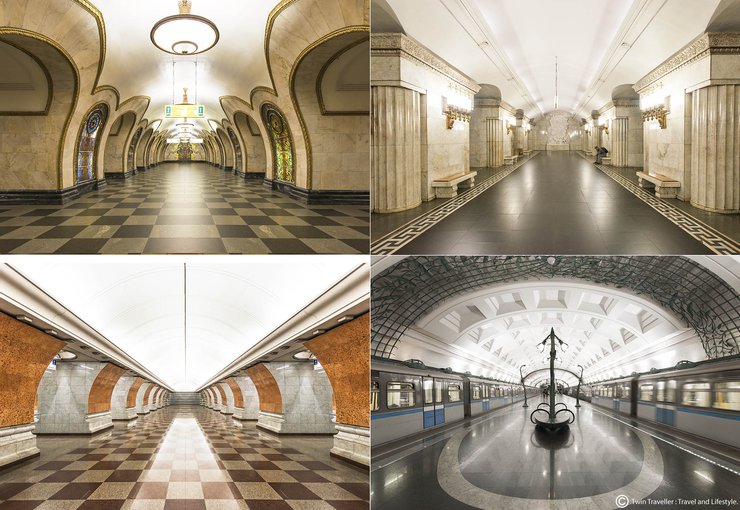8 Most Beautiful Metro Stations in Moscow, Russia
Is there anything else I can help you with?

Hello everyone, today I will review the Moscow Metro in Russia. Many people may wonder, we also have a subway station in our country, what's so special about it? And is it worth spending time to see it? It's crowded and chaotic. Isn't it better to walk around Red Square and the Grand Kremlin Palace and go shopping at GUM? Before you ask various questions, I will review it for you to read.
Before visiting, friends can stop by to say hello or see reviews of our other locations here.

Exploring the Beauty and Secrets of Moscow's Metro
Before embarking on our journey to Moscow, we meticulously researched tourist destinations and travel routes within the city. We discovered that beyond the iconic Kremlin, Red Square, and St. Basil's Cathedral, which are popular tourist attractions, the Moscow Metro itself is a captivating sight.
The Moscow Metro boasts an impressive network of 12 lines and 194 stations, each boasting unique architectural and artistic features. While all stations possess their own charm, we have selected eight that particularly captivated us. These stations are a must-visit for anyone who appreciates art and architecture.
Dedicating a day to exploring the beauty of the Metro is highly recommended. However, beneath the surface of this aesthetic marvel lies a hidden layer of meaning and history. This review delves into the significance and history of various stations, providing detailed explanations. Additionally, we offer guidance on navigating the Metro, including purchasing tickets, identifying routes leading to the most stunning stations, and essential safety precautions.
Prepare to embark on a captivating journey through the depths of Moscow's Metro, where beauty intertwines with hidden secrets.

Moscow's Extensive Metro System: A Comparison to Japan's Labyrinthine Networks
Moscow boasts an impressive metro system, encompassing 12 lines and 194 stations. While this may seem overwhelming at first glance, it pales in comparison to the intricate networks found in major Japanese cities like Tokyo and Osaka. These metropolises feature a multitude of colorful lines and countless stations, creating a labyrinthine transportation system. However, for those familiar with navigating Japan's complex rail networks, Moscow's metro should present no significant challenges.

"Metropolitan"
Navigating the Moscow Metro: A User-Friendly App
This passage describes a user-friendly application for navigating the Moscow Metro. The app's key features are highlighted, emphasizing its ease of use and helpful functionalities.
Key Features:
- Simple and clean design: The app boasts a user-friendly interface with clear menus and intuitive navigation.
- Bookmarking stations: Users can conveniently bookmark frequently used stations for quick access, eliminating the need to search for them repeatedly.
- Real-time location tracking: The app displays the user's current location within the Metro system, providing reassurance and preventing them from missing their stop.
- Ticket and SmartCard information: The app likely offers information on purchasing and using tickets and SmartCards within the Metro system.
Overall, the app appears to be a valuable tool for both first-time and regular users of the Moscow Metro, offering a convenient and efficient way to navigate the extensive network.
Is there anything else I can help you with?


The subway offers a variety of travel cards to suit your needs. Simply choose the card that best fits your travel frequency and purchase it. Notably, if you are traveling with a group of four, you can purchase a single card and share it among yourselves. When you reach the turnstile, simply tap the card four times, once for each person. This is a cost-effective option, and the card has no expiration date.
*This card is only valid in Moscow. You will need to purchase a new card for St. Petersburg.
Additional information ( http://troika.mos.ru/en/ ) Now, after a brief explanation of the train station map and tickets,
Let's travel back to the Soviet era and witness the peak of Russia's communist rule by exploring the Moscow Metro!

Upon entering the train station, we are greeted by ticket booths where we can speak to an agent. Some stations also have automated ticket machines. Even before descending to the underground platform, the entrance itself is magnificently designed, sparking excitement.


After purchasing a ticket from the ticket booth and receiving it from the staff, we descended the escalator to explore what awaited us below.


This location offers a unique opportunity to delve into the history of Russian warfare. The train station was initially constructed for military purposes, not for public use. During President Stalin's era, the railway was built to transport troops and supplies to various Soviet cities during wartime, especially crucial during harsh winters. The station also served as a refuge for citizens. The depth of the station is remarkable, extending several stories underground, providing a sense of security and protection from potential explosions.
The Magnificent Moscow Metro: A Journey Through History and Art
The Moscow Metro is not just a means of transportation; it's a subterranean art gallery, a testament to Soviet history, and a unique cultural experience. Unlike most metros built by professional construction crews, the Moscow Metro was largely constructed by soldiers, young people, and even prisoners, with a workforce of around 13,000. This unique approach resulted in a focus on durability and monumental art.
The stations are adorned with sculptures, mosaics, stained glass, and bas-reliefs, all serving as powerful reminders of the era's heroes and ideals. These artistic elements evoke a sense of patriotism, nationalism, and socialist values, aiming to inspire future generations.
Exploring the Moscow Metro is like stepping back in time, offering a glimpse into the Soviet past and its artistic expression. With eight particularly stunning stations, a visit to the Moscow Metro is a must for anyone interested in history, art, and architecture.
1. Komsomolskaya Station (Комсомольская) on the brown line

The station is 37 meters deep and connects to the station of the same name on the red line. Designed by Aleksey Shchusev, it won the New York World's Fair award for its central hall adorned with large lamps and a ceiling beautifully decorated with various colored stones. It is a popular tourist destination, connecting to three railway stations: Leningradsky Rail Terminal, Yaroslavsky Rail Terminal, and Kazansky Rail Terminal. This makes it one of the busiest stations in the city. The station's architects, A. Shchusev and P. Korin, received the State Prize of the USSR in 1951.

The Elektrozavodskaya station (Электрозаводская) opened on May 15, 1944, with a depth of 31.5 meters. Its name derives from the nearby electric bulb factory, which inspired the architects to design the ceiling with six rows of circular lamps (318 in total). The design also incorporates marble on the square pillars. The platform level features a golden railing decorated with hammer and sickle symbols.
Note: The translation omits the reference to the Arbatskaya station (Арба́тская) as it is incomplete in the provided text.

Arbatskaya Station (Арба́тская) was built as a bomb shelter and opened on April 5, 1953. It is the second largest metro station in Moscow, with a platform length of 250 meters and a depth of 41 meters. It is known for its stucco decorations and chandeliers. It is a large station that is always crowded due to its connection to four metro lines. After Stalin's death, it was praised as a station with a perfect Stalinist Baroque design.4. Ploschad Revolyutsii Station (Пло́щадь Револю́ции) Line3-DarkBlue

Ploschad Revolyutsii Station (Пло́щадь Револю́ции) on Line 3 (Dark Blue) opened on March 13, 1938. Designed by Dushkin, the station features 76 Armenian marble sculptures lining the platform passageways. Some of these sculptures are polished to a shine by people who believe it brings good luck.

Opened on May 6, 2003, Park Pobedy is the deepest station in the Moscow Metro, reaching a depth of 73.6 meters. It also boasts the longest escalator in the system, stretching 126 meters. The station's design features mosaics depicting scenes from the Patriotic War. The grand hall is adorned with white and brown marble columns and walls.
Note: I have omitted the mention of Novoslobodskaya station as it appears to be unrelated to the description of Park Pobedy station.

Mayakovskaya Station
Opened on January 30, 1952, Mayakovskaya Station boasts a depth of 40 meters. Its most striking feature is the 32 magnificent stained-glass windows created by Latvian artists. Each window is framed by brass, and the platform ends are adorned with pink Ural marble and brass moldings. The mosaics, titled "Peace Throughout the World" and created by Pavel Korin, along with the stained-glass panels, mosaics, and chandeliers, underwent a major restoration in 2003.
Is there anything else I can help you with?

Considered one of the most beautiful stations in the world, it was awarded the Grand Prize at the 1938 World's Fair in New York. The ceiling is adorned with mosaics depicting a bright future for the Soviet Union, created by Alexander Deyneka. Slavyansky Bulvar Station (1 of 15 The Most Beautiful Metro Stations In The World).

This station is one of our favorites because its design makes us feel like we've stepped into a futuristic world. The station is spacious and was designed by architect S. Volovich. The interior walls are made of green marble from Cuba, known as "Verde Guatemala," and other types of marble that reflect light beautifully.
Some information from this website ( http://www.oknation.net/blog/mena/2014/10/21/entry-1)


Essential Tips and Precautions for Navigating the Subway
This section highlights crucial information and safety measures to consider when using the subway.
This incident actually happened, so I wanted to share it with my friends so that they would be aware of it. This way, they can travel safely and avoid being taken advantage of by thieves.
This incident occurred at a subway station. It appears to have started at the station entrance, where they followed us into the station, walked closely behind us, and waited for the train together. Once we were on the train, waiting for it to depart, the warning sound for the doors closing played. Before the doors closed, they quickly exited the train, forcefully bumped into their target, grabbed their shoulder, and had their accomplice discreetly pickpocket the wallet from the victim's pants pocket. They then exited the train. We were all stunned and confused, as there weren't many people on the train at the time, and we were all standing close together. The perpetrators likely came as a gang of approximately three people. If you encounter a similar situation, please be cautious. What should you do if you are pickpocketed?
Is there anything else I can help you with?

" **Alert in St. Petersburg!** "
This post will share my experience and how to deal with the problem of pickpocketing in St. Petersburg. A member of our group was pickpocketed in a crowded tourist area. The thieves used a distraction technique, with one person holding a tour sign and talking to us while another person picked our friend's pocket. We didn't realize what had happened until we reached a crosswalk, where it was easiest for them to steal. We lost some belongings and were shocked. We searched for the police and found an officer at the train station. We explained the situation and showed him photos and the location of CCTV cameras that might have captured the thieves. However, the officer told us to report the incident at the police station in the area where it occurred. This was challenging because we were in Russia, where few people speak English outside of service or tourism industries. The officer struggled to understand us, but we eventually found the police station using Google Maps.
A Frustrating Encounter with Language Barriers in Russia
Our group decided to split up, with the woman taking the lead due to her superior language skills. We accompanied her, navigating with a map to guide us to the police station. Upon arrival, we expected to file a complaint and initiate the claim process. However, to our surprise, none of the officers at the station spoke or understood English. A few attempted to communicate, but ultimately gave up, suggesting we find an interpreter. They insisted on a certified interpreter, refusing to proceed without one.
This presented a significant challenge. We questioned the necessity of an official interpreter, wondering if finding a Russian speaker who understood English would suffice. The woman suggested asking the hotel receptionist, who was fluent in both languages. We opted for this simpler approach, questioning the need for a certified interpreter.
Returning to the hotel, the receptionist kindly offered to drive us back to the police station. We felt confident as he entered the station, but his subdued tone upon returning indicated trouble. He confirmed that an official interpreter was mandatory, and without one, the officers wouldn't engage or process our claim.
Expressing our gratitude for his assistance, we followed his suggestion to visit a translation agency. This concept was initially confusing, as we weren't familiar with such services in Thailand. Upon arrival, we realized it functioned similarly to printing shops in Thailand, offering document translation and interpreter services for various purposes, including tourism. However, in Russia, the need for such services is amplified due to the widespread lack of English proficiency.
The agency assigned us to a Russian employee fluent in English. They listened attentively as we recounted the incident and requested an interpreter to accompany us back to the police station. The total cost, including the interpreter's services, amounted to 3,500 rubles.
With the interpreter in tow, we returned to the police station. This time, the officers engaged with us and processed our claim efficiently.
To ensure a safe and enjoyable trip, it is crucial to maintain constant awareness of your surroundings. When traveling in groups, it is advisable to look out for one another and promptly alert each other to any potential dangers, such as the presence of thieves. Additionally, familiarizing yourself with the city's key landmarks and regulations will save you time and prevent unnecessary delays.
This concludes my review of the 8 most beautiful metro stations in Moscow, Russia. There are actually many other beautiful stations, but due to time constraints, I was only able to visit these. I apologize for any omissions. Thank you to all my friends who followed me to the end.
Twin Traveller
Friday, October 4, 2024 3:01 PM




















